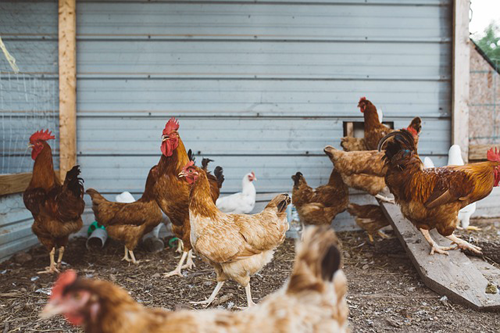Betaine is the trimethyl derivative of the amino acid glycine. As a by-product of sugarbeet processing, betaine is commercially available as a feed additive. Due to its chemical structure (Fig. 1), various functions have been described for the betaine molecule. In plants (for example, Robinson & Jones, 1986), bacteria (for example, Le Rudulier et al. 1984), and marine organisms (for example, Clarke et al. 1994), betaine is a widely distributed osmoprotectant.. The osmotic activity of betaine has to be attributed to its dipolar zwitterion characteristics and its high solubility in water (Chambers & Kunin, 1985). Furthermore, betaine provides three methyl groups which can be used in transmethylation reactions for the synthesis of numerous substances such as carnitine and creatine (for example, Kidd et al. 1997). Finally, by virtue of its chemical structure, betaine shows the characteristics of the amino acid glycine as well. Due to both its methyl donor and its amino acid function, betaine is involved in protein and energy metabolism. In animal nutrition, betaine is widely discussed as a ‘carcass modifier’ due to its lipotropic and growth-promoting effects.
Dietary sources of betaine
In plants and bacteria, betaine often is produced and accumulated in order to cope with salt and temperature stress (for example, Kuznetsov & Shevyakova, 1997; Xing & Rajashekar, 2001). The betaine content of selected feed ingredients is summarised. Sugarbeets contain exceptionally high levels of betaine which accumulate in condensed molasses solubles, a by-product of sugarbeet processing. In addition, considerable amounts of betaine have been found in wheat bran (Westberg, 1951) and wheat (E Virtanen, cited by Kidd et al. 1997). Nevertheless, betaine is also available as a feed additive in purified form. The most popular forms of feed-grade betaine are anhydrous betaine, betaine monophosphate and betaine hydrochloride.

Physiological and nutritional functions of betaine
Betaine as an osmotic active substance
Betaine accumulation is stimulated by external hyperosmolarity in the renal cells (Bagnasco et al. 1986; Nakanishi et al. 1990; Moeckel & Lien, 1997) and macrophages (Warskulat et al. 1995; Zhang et al. 1996). Osmolytes are particularly important in situations of cellular dehydration since these compounds help to minimise water loss against a prevailing osmotic gradient (Klasing et al. 2002). Betaine exerts an osmoprotective effect by accumulating in cell organelles and cells exposed to osmotic and ionic stress, thereby replacing inorganic ions and protecting enzymes as well as cell membranes from inactivation by inorganic ions (Petronini et al. 1992). Changes in cell water volume are known to affect cell activity.
Osmotic capacity of betaine in the gut
Intestinal cells always have to cope with variable osmotic media since the luminal content of the intestine is hyperosmotic in relation to blood plasma (Mongin, 1976). Moreover, the process of nutrient digestion and absorption necessitates osmolytic protection mechanisms since intestinal cells mediate the exchange of water, small solutes such as ions, nutrients and macromolecules between plasma and intestinal fluid. Betaine is thought to be an important organic osmolyte for the control of the osmotic pressure inside the intestinal epithelial cells (Hochachka & Somero, 1984Effects of betaine as an osmotic active substance may be more pronounced in animals exposed to osmotic disorders such as coccidiosis in poultry.
Betaine and coccidiosis
Intestinal parasites commonly infect vertebrates, and coccidia are prevalent pathogens in chicks. These pathogens infect the intestinum and cause pathological lesions which are visible both macroscopically and microscopically. Malabsorption and diarrhoea are typical symptoms of coccidiosis. Betaine is known to positively influence water balance of broilers exposed to coccidia (Teeter et al. 1999), and to reduce faecal water content in turkeys (Ferket, 1995) and broilers (Remus et al. 1995). Reductions in faecal water content and decreased morbidity have been reported in weaned pigs as well (Xu & Yu, 2000). The results of some investigations with broiler chicks even showed that betaine might improve the efficacy of coccidiostats as indicated by improved animal performance (for example, Virtanen et al. 1993; Augustine et al. 1997). Ionophore coccidiostats as such disturb the osmotic balance of the gut which may be attenuated by dietary betaine. Augustine et al. (1997) suggested that betaine may contribute to the improved performance of coccidian-infected chicks directly, by partial inhibition of coccidial invasion and development, and indirectly, by an improvement of the intestinal structure and function in the presence of a coccidial infection. This improvement of the intestinal structure might occur in both infected and healthy animals, and may affect nutrient digestibility.
Betaine and nutrient digestibility
The osmolytic property of betaine supports intestinal cell growth and survival and enhances cell activity, thereby potentially influencing nutrient digestibility. In weaned pigs, the total digestibility of DM and crude protein was improved by 4·2 and 6·4%, respectively, when betaine was added to the diet (Xu & Yu, 2000). In coccidian-challenged broilers, betaine improved the digestibility of methionine (Augustine & Danforth, 1999), protein, lysine, fat and carotenoid (Remus et al. 1995). In addition, intestinal cell activity increases as indicated by a 52% higher activity of proteolytic enzymes in weaned pigs following dietary supplementation of betaine (Xu & Yu, 2000).
Osmotic capacity of betaine in the muscle tissue
The effect of betaine as an osmolyte is not exclusively restricted to the gut. For example, in kidney cells of rabbits betaine is used to compensate for the osmotic stress caused by electrolytes and urea (Yancey & Burg, 1989) and in the liver betaine is a potent protectant against bile acid-induced apoptosis (Graf et al. 2002). Additionally, it has been shown that betaine accumulates in muscle cells of pigs (Matthews et al. 2001c), thus possibly affecting meat quality.
Regulation of the transmethylation cycle
In metabolic reactions, protein synthesis and the formation of SAM compete for the available methionine. Thus, the metabolite HC has to be distributed between two competing pathways (Finkelstein & Martin, 1984). Under nonphysiological conditions, such as deficiency of either methyl donors or acceptors, the accumulation of methionine and HC is thought to be toxic to cells (Hafez et al. 1978). Therefore, regulation of the transmethylation cycle is required to maintain physiological levels of HC and methionine (Finkelstein, 1998). Generally, methionineconserving and methionine-catabolising enzymes are involved. To allow the distribution of HC during the pathways two mechanisms are suggested: (1) low HC levels induce the transmethylation pathway since the enzymes involved in the transmethylation process show high affinity to HC. If the capacity of these enzymes is reached the transsulfuration pathway is favoured in which SAM acts as a switch. (2) High SAM levels as a consequence of high dietary methionine levels facilitate the trans-sulfuration pathway and limit HC re-methylation by inhibition of the methylating enzymes and by activation of the transsulfuration pathway. In contrast, low HC levels promote the conservation of HC. In addition, glycine seems to have afundamental role in maintaining balance in the transmethylation cycle (Rowling et al. 2002). If methyl acceptors are in short supply, the methyl groups of SAM are transferred to glycine. The involved enzyme shows high affinity, the products are non-toxic and the methyl groups can be regenerated if they are required afterwards.
Conclusion
The osmoprotective properties of betaine may result in an increased proliferation of the intestinal structure which, in turn, may have a positive impact on poultry health status and nutrient digestibility. Since the use of in-feed antibiotics will be restricted in the future, there will be growing interest in using betaine as a bioactive compound for improving gut health. Furthermore, betaine seems to contribute to a certain extent to a reduced requirement for methyl donors such as methionine and choline. There is also some evidence that betaine may improve the availabilities of methionine and choline or may interact with metabolic factors regulating growth such as GH and insulin-like growth factor-1. Additionally, considerable improvements in performance and carcass quality such as improved carcass quality and lower feed conversion have been reported. In particular, under certain physiological conditions, such as sub-optimal protein turnover, exposure to pathogens or osmotic stress, betaine may have a positive impact in poultry production.






Be the first to comment